A curved surface is shown in the figure. The portion BCD is free of friciton. There are three spherical balls of identical radii and masses. Balls are released from rest one by one from A which is at a slightly greater height than C.

With the surface AB, ball 1 has large enough firction to cause rolling down without slipping, ball 2 has a small friction and ball 3 has a negligible frction.
For which balls is total mechanical energy conserved? Solution in Punjabi
Step by step video & image solution for A curved surface is shown in the figure. The portion BCD is free of friciton. There are three spherical balls of identical radii and masses. Balls are released from rest one by one from A which is at a slightly greater height than C. With the surface AB, ball 1 has large enough firction to cause rolling down without slipping, ball 2 has a small friction and ball 3 has a negligible frction. For which balls is total mechanical energy conserved? by Physics experts to help you in doubts & scoring excellent marks in Class 11 exams.
Topper's Solved these Questions
Similar Questions
Can mechanical waves travel through vacuum?
10:33View SolutionA solid spherical ball rolling without slipping collides elastically with an identical ball at rest, as shown in the figure. Assuming that the frictional forces are small enough to have negligible effect during the instant of collision, calculate, the velocity of each ball along enough time after the collision when each ball is again rolling without slipping.
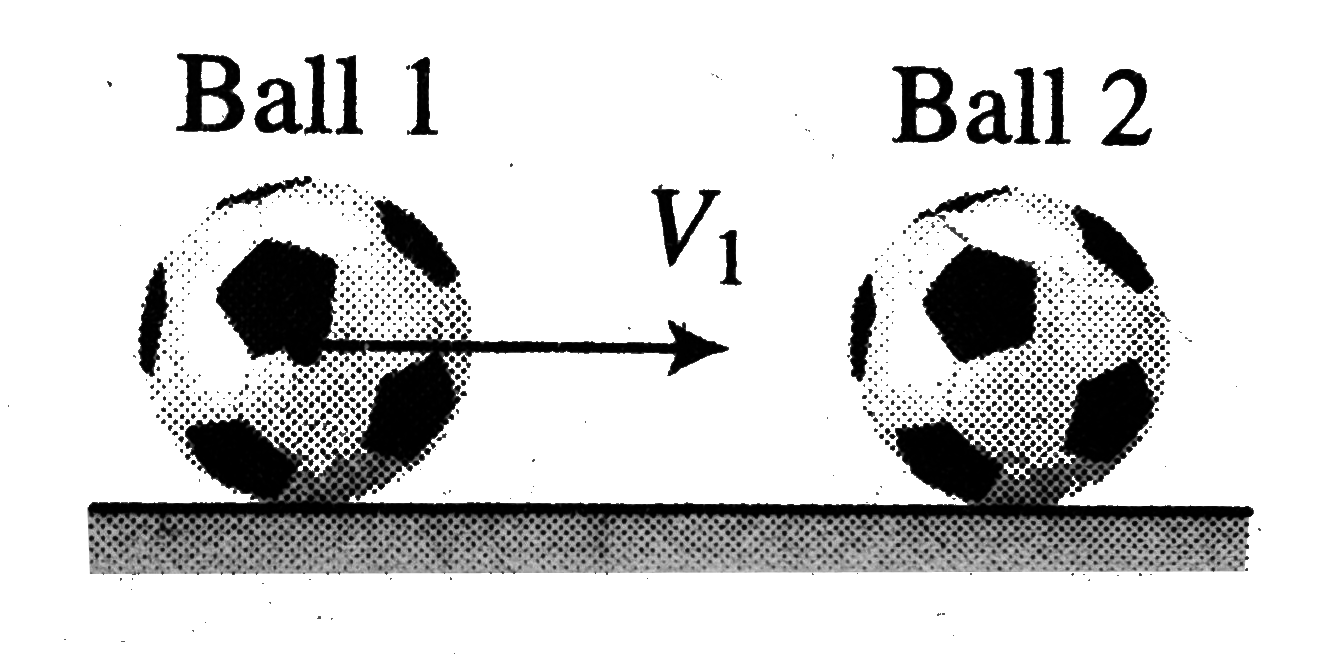 03:46View Solution
03:46View Solution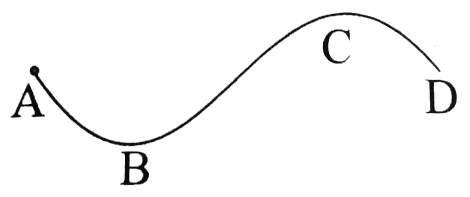
A curved suface is shown in figure. The portion BCD is free of friction. There are three spherical balls of identical radii and masses. Balls are released from rest one by one from A which is at a slightly greater height than C.
Wioth the surface AB, ball 1 has large enough friction to cause rolling down without slipping, ball 2 has a small friction and ball 3 has a negligible friction.
(a) For which ball is total mechanical energy conserved?
(b) Which ball(s) can reach D?
(c )For ball which do not reach D, which of the balls can reach back A?02:34View SolutionA ball moves over a fixed track as shown in the figure. From A to B ball rolls without slipping. Surface BC is frictionless. KA,KB and KC are kinetix energies of the ball at A,B and C, respectively. Then
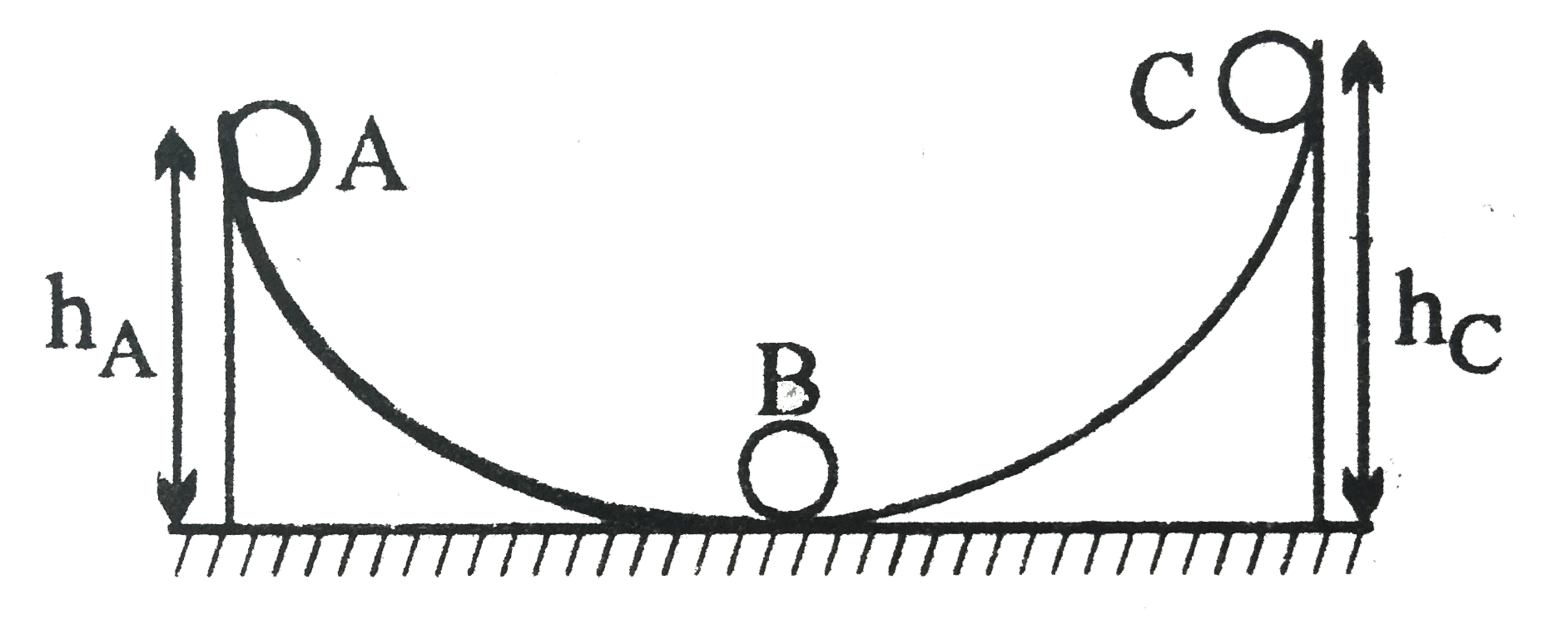 .03:24View Solution
.03:24View SolutionA ball moves over a fixed track as shown in the figure. From A and B the ball rolls without slipping. If surface B is frictionless and KA,KB and KC are kinetic energies of the ball at A,B and C respectively then:
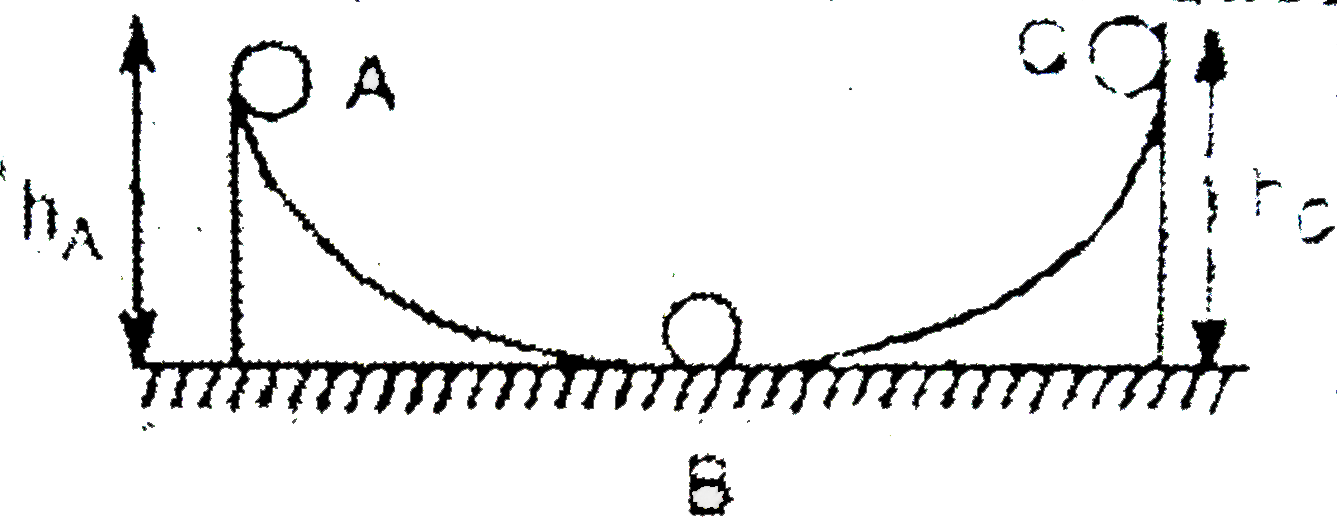 02:49View Solution
02:49View SolutionA rigid ball rolls without slipping on a surface shown below. Which one of the following is the most likely representation of the distance traveled by the ball vs time graph?
05:22View Solutionएक गेंद चित्रानुसार एक स्थिर वक्रीय पथ पर घूमती है। A से B तक गेंद बिना फिसले लुढ़कती है। यदि सतह BC घर्षण रहित है व KA,KB तथा KC गेंद की क्रमशः A,B और C पर गतिज ऊर्जाएं हैं तो
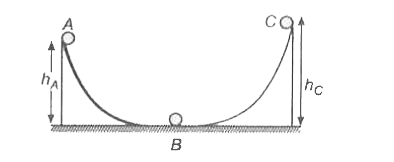 10:00View Solution
10:00View Solutionएक वक्र पृष्ठ को चित्र में दिखाया गया है। भाग BCD घर्षणरहित है। एकसमान त्रिज्या व द्रव्यमानों की तीन गोलीय गेंदे हैं। गेंद A जो कि C की अपेक्षा थोड़ी सी अधिक ऊँचाई पर है। आरंभ करके एक-एक करके विरामावस्था से गेंदों को छोड़ा जाता है, AB सतह के साथ गेंद 1 में बिना फिसले हुए लुढ़कने के लिए पर्याप्त घर्षण है, गेंद 2 में थोड़ा घर्षण है तथा गेंद 3 में नगण्य घर्षण है। किन गेंदों के लिए कुल यांत्रिकीय ऊर्जा संरक्षित होती
 04:01View Solution
04:01View Solution
A curved suface is shown in figure. The portion BCD is free of friction. There are three spherical balls of identical radii and masses. Balls are released from rest one by one from A which is at a slightly greater height than C.
Wioth the surface AB, ball 1 has large enough friction to cause rolling down without slipping, ball 2 has a small friction and ball 3 has a negligible friction.
(a) For which ball is total mechanical energy conserved?
(b) Which ball(s) can reach D?
(c )For ball which do not reach D, which of the balls can reach back A?04:02View SolutionA curved surface is shown figure . The portion BCD is free of friction .There are three spherical balls of identical radii and masses . Balls are released from at rest one by one from A which is at a slighly greater height than C . with the surface Ab , ball 1 has large eneough friction to cause rolling down without slipping , ball 2 has a small friction and ball 3 has a negligible friction . (a) For which balls is total mechanical energy conserved ? (b) Which ball (s) can reach D ? (c ) For ball which do not reach D, which of the balls can reach back A ?
06:52View Solution
A curved suface is shown in figure. The portion BCD is free of friction. There are three spherical balls of identical radii and masses. Balls are released from rest one by one from A which is at a slightly greater height than C.
Wioth the surface AB, ball 1 has large enough friction to cause rolling down without slipping, ball 2 has a small friction and ball 3 has a negligible friction.
(a) For which ball is total mechanical energy conserved?
(b) Which ball(s) can reach D?
(c )For ball which do not reach D, which of the balls can reach back A?04:52View SolutionA small spherical ball of mass m slides without friction from the top of a hemisphere of radius R.At what height will the ball lose contact with surface of the sphere?
10:00View Solutionचित्र में एक वक्र पृष्ठ दर्शाया गया है। इसका BCD भाग घर्षणरहित है। सर्वसम त्रिज्याओं और द्रव्यमानों की तीन गोलाकार गेंदें दी गई हैं। गेंदों को एक-एक करके बिंदु A से विरामावस्था में छोड़ा जाता है। बिंदु A बिंदु C से कुछ अधिक ऊँचाई पर है।

पृष्ठ AB के साथ गेंद-1 का घर्षण इतना अधिक है कि यह इस पर फिसले बिना लुढ़कती है, गेंद-2 का घर्षण कम है और गेंद-3 का घर्षण नगण्य है
(a) किन गेंदों के लिए कुल यांत्रिक ऊर्जा संरक्षित रहती है?
(b) कौन-सी गेंदें बिंदु D तक पहुँच पाती हैं? (c) जो गेंदें D तक नहीं पहुँच पाती उनमें से कौन-सी गेंदें वापस A पर लौट पाती हैं ?02:29View SolutionA solid spherical ball rolling without slipping collides elastically with an identical ball at rest, as shown in the figure. Assuming that the frictional forces are small enough to have negligible effect during the instant of collision, calculate, the velocity of each ball along enough time after the collision when each ball is again rolling without slipping.
04:59View SolutionA hollow spherical ball rolls down on a parabolic path AB from a height 'h' as shown in the figure. Path AB is rough enough to prevent slipping of ball and path BC is frictionless. The height to which the ball will climb in BC is
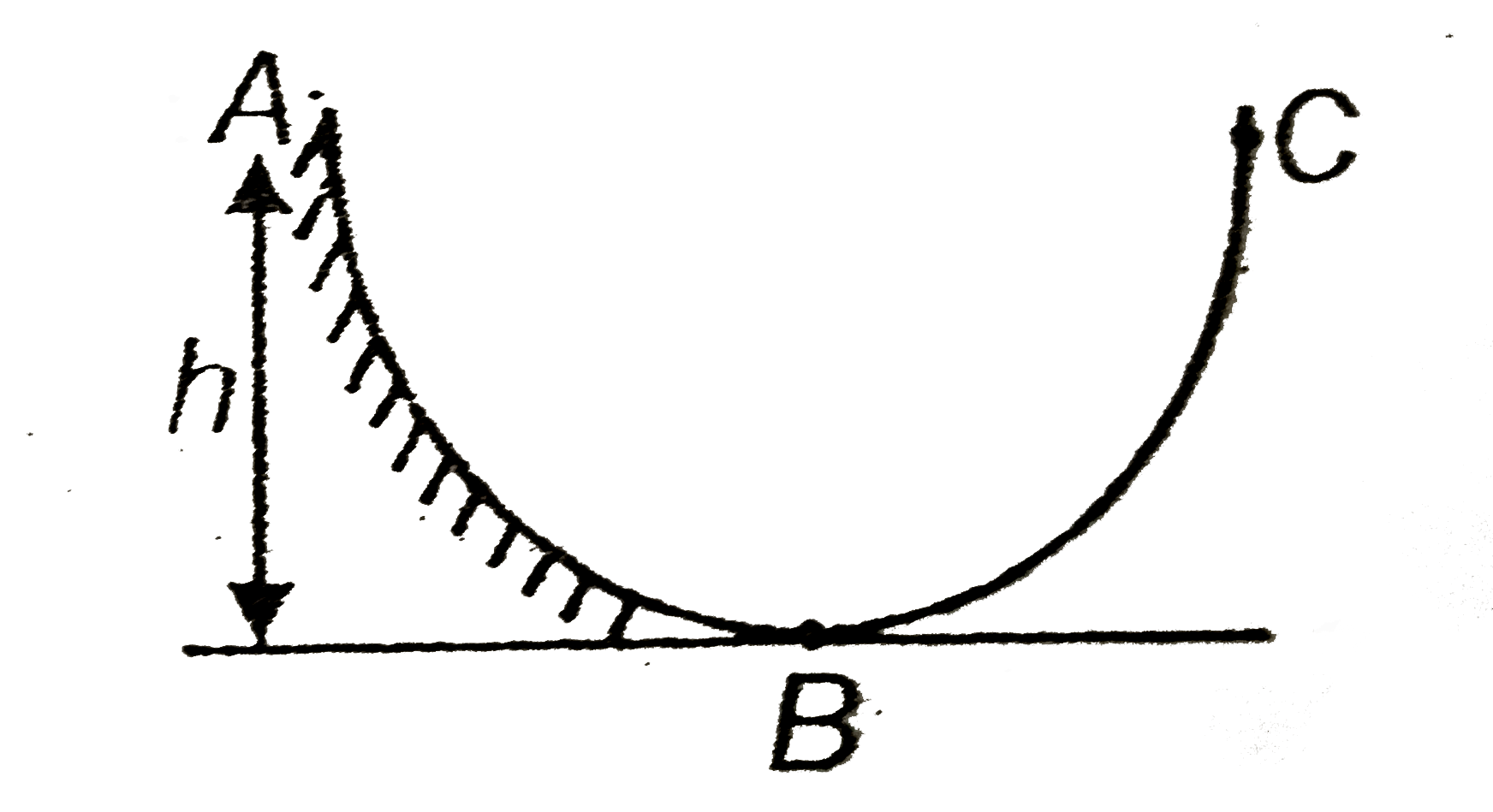 02:25View Solution
02:25View Solution

